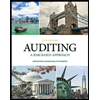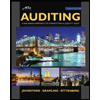
To explain: The conceptual framework for financial reporting.
Explanation of Solution
Financial reporting:
Financial reporting refers to the process of disclosure of the financial statements of a public trading company to its users regarding the company’s performance over a particular period of time.
The parties in the financial reporting are the Public Company Accounting Oversight Board (PCAOB), Financial Accounting Standards Board (FASB), and the Securities and Exchange Commission (SEC).
Conceptual framework describes the actual purpose of financial reporting. It provides the concepts, principles, and ideas to create the accounting standards and guidelines, which are uniform in nature. Its primary objective is to help the accounting standard-setters to create and review the standards.
At times when new standards are developed, the people involved in setting those standards are required to ensure that the projected standards satisfy the purpose of financial reporting.
Moreover, the information obtained through these new standards must have qualitative aspects to make the financial information more helpful and relevant.
Thus, the conceptual framework sets quality accounting standards to be used all across the globe.
Hence, the conceptual framework for financial reporting is explained as above.
Want to see more full solutions like this?
Chapter 2 Solutions
Intermediate Accounting
- Please provide the answer to this financial accounting question with proper steps.arrow_forwardI am trying to find the accurate solution to this general accounting problem with appropriate explanations.arrow_forwardCan you solve this financial accounting question with accurate accounting calculations?arrow_forward
 Auditing: A Risk Based-Approach (MindTap Course L...AccountingISBN:9781337619455Author:Karla M Johnstone, Audrey A. Gramling, Larry E. RittenbergPublisher:Cengage Learning
Auditing: A Risk Based-Approach (MindTap Course L...AccountingISBN:9781337619455Author:Karla M Johnstone, Audrey A. Gramling, Larry E. RittenbergPublisher:Cengage Learning Auditing: A Risk Based-Approach to Conducting a Q...AccountingISBN:9781305080577Author:Karla M Johnstone, Audrey A. Gramling, Larry E. RittenbergPublisher:South-Western College Pub
Auditing: A Risk Based-Approach to Conducting a Q...AccountingISBN:9781305080577Author:Karla M Johnstone, Audrey A. Gramling, Larry E. RittenbergPublisher:South-Western College Pub


